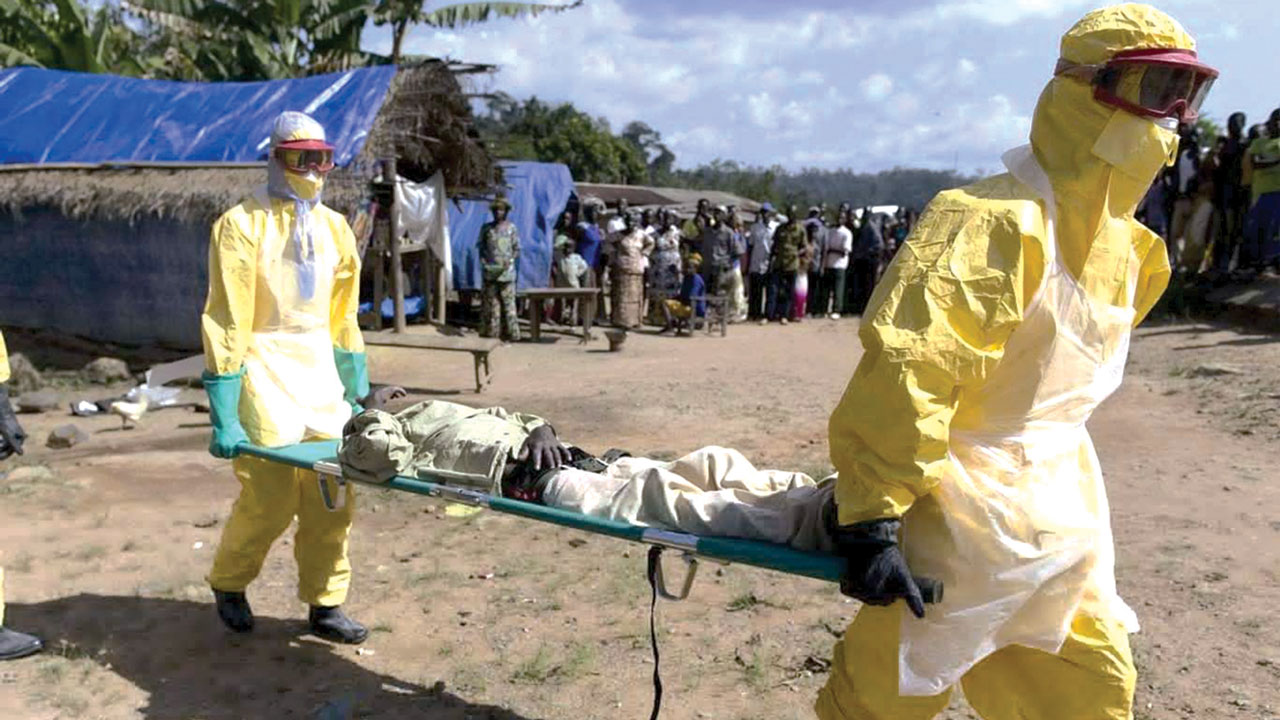
*4,700 veterinarians in 25 countries trained to stop new infections at source
The World Health Organization (WHO) has added a mysterious, yet-to-exist new malady to its list of nine diseases that may cause a worldwide epidemic.As if Ebola, Zika and Severe Acute Respiratory Syndrome (SARS) are not enough to worry about, the WHO has added a mysterious, yet-to-exist new malady to its list of nine diseases that may cause a worldwide epidemic.
“Disease X” is not a newly identified killer pathogen. It is a so-called “known unknown” — that could be created by biological mutation, such as previous deadly epidemics such as Spanish Flu or Human Immuno-deficiency Virus (HIV). Or it might be spawned by a terror attack, or simply an accident.
“Disease X represents the knowledge that a serious international epidemic could be caused by a pathogen currently unknown,” the organization said.By including this mystery killer on its “List of Blueprint priority diseases,” along with eight better-known diseases such as Middle East Respiratory Syndrome (MERS) and Marburg Virus, WHO was aiming to acknowledge that infectious diseases are unpredictable.
WHO adviser, Marion Koopmans, said: “The intensity of animal and human contact is becoming much greater as the world develops. This makes it more likely new diseases will emerge, but also modern travel and trade make it much more likely they will spread.”
According to a report originally published in the New York Post, “the idea behind including Disease X is not to scare people, but to spur public health officials into making sure that they are prepared for all threats, not just the predictable ones, the organization said.“The intensity of animal and human contact is becoming much greater as the world develops,” WHO adviser Marion Koopmans told The Telegraph UK. “This makes it more likely new diseases will emerge, but also modern travel and trade make it much more likely they will spread.”
Most times an epidemic spreads, it doesn’t announce itself first – such as Zika’s rampage through South America and the Caribbean in 2015-2016.This was the third time WHO convened the committee of experts in viruses, bacteria and infectious disease to consider potential epidemics and pandemics. It was the first time that Disease X made the list.
One possible source of such an epidemic could be the deliberate release of Disease X as a weapon, either by a rogue state like North Korea or Syria, which is known to use chemical weapons, or by terrorist organizations like ISIS or al-Qaeda.
New scientific abilities like gene editing, especially when combined with today’s supercomputers, make developing biological weapons easier than when the United States (US) and Soviet Union experimented with them during the Cold War.
An unknown nerve agent, for instance, was reportedly used in an assassination attempt last week on a Russian man who spied for the British and his daughter. North Korea is suspected of using a different nerve agent to assassinate Kim Jong-un’s half-brother last year.Man-made viruses and bacteria would be harder for the human body to fend off because there is no natural immunity.
Meanwhile, a United States-Food and Agricultural Organisation (FAO) partnership working to strengthen the capacity of developing countries to manage outbreaks of diseases in farm animals has in just 12 months succeeded in training over 4,700 veterinary health professionals in 25 countries in Africa, Asia and the Middle East.The FAO-provided technical trainings covered a gamut of key competencies, including disease surveillance and forecasting, laboratory operations, biosafety and biosecurity, prevention and control methods and outbreak response strategies.
All told, 3,266 vets in Asia, 619 in West Africa, 459 in East Africa, and 363 in the Middle East benefitted. They are on the front line of the effort to stop new diseases at their source.
“Over the course of this relationship we’ve learned that there are many mutually beneficial areas of interest between the food and agricultural community and the human health community,” said Dennis Carroll, Director of United States Agency for International Development’s (USAID’s) Global Health Security and Development Unit.
“A partnership with FAO not only enables us to protect human populations from future viral threats, but also to protect animal populations from viruses that could decimate food supplies. It’s not just a global health, infectious disease issue, but also a food security, food safety, and economic growth issue,” Carroll added.”Some 75 percent of new infectious diseases that have emerged in recent decades originated in animals before jumping to us Homo sapiens, a terrestrial mammal. This is why improving adequately discovering and tackling animal disease threats at source represents a strategic high-ground in pre-empting future pandemics,” said Juan Lubroth, FAO Chief Veterinary Officer
“A proactive approach is absolutely critical, and for that, the world needs well-trained, up-to-speed professionals — biologists, ecologists, microbiologists, modellers, physicians and veterinarians — which is why the United States’ consistent support for building up that kind of capacity has been invaluable,” Lubroth said.
Population growth, agricultural expansion and environmental encroachment, and the rise of inter-continental food supply chains in recent decades have dramatically altered how diseases emerge, jump species boundaries, and spread, FAO studies have shown.
A new study just published by USAID’s Dennis Carroll and experts from several institutions including FAO suggests that just 0.01 percent of the viruses behind zoonotic disease outbreaks are known to science. The authors have proposed an international partnership, The Global Virome Project, aimed at characterizing the most risky of these. Doing so would allow more proactive responses to disease threats, with benefits not only for public health but also for the livelihoods of poor, livestock-depending farming communities.
The close FAO-USAID partnership on animal health goes back over a decade.Experts from the two organizations are meeting in Rome this week to review progress achieved in the past year and how to respond to threats like species-jumping zoonotic illnesses and the growing trends of antimicrobial resistance and options for intervention measures in food production and protection of public health.
In addition to trainings, via the USAID- Emerging Pandemic Threats (EPT) programme, FAO conducts research and advises on policy in order to help countries increase their resilience to disease emergence and protect animal and human health.
And to enable rapid responses by governments to disease events FAO has leveraged USAID support to work with the United Nations Humanitarian Response Depots to establish a series of emergency equipment and gear stockpiles in 15 countries that facilitate rapid and adequate responses to outbreaks.
FAO is also key player and advisor to the Global Health Security Agenda (GHSA), a growing partnership of over 60 countries, NGOs and international organizations working to improve early detection of and responses to infectious disease threats. USAID support under the GHSA umbrella is helping FAO engage with 17 countries in Africa and Asia to strengthen capabilities to detect and respond to zoonotic diseases.
Thanks to USAID support for the EPT and GSHA, FAO is actively tackling disease issues and building national capacities in over 30 countries.Beyond the risks posed to human health, animal diseases can cost billions of dollars and hamstringing economic growth.
The most damaging outbreaks of high impact disease in recent decades all had an animal source, including H5N1 highly pathogenic avian influenza, H1N1 pandemic influenza, Ebola, severe acute respiratory syndrome (SARS) and Middle East Respiratory Syndrome (MERS).
For example, the H5N1 outbreak of the mid-2000s caused an estimated $30 billion in economic losses, globally; a few years later, H1N1 racked up as much as $55 billion in damages.Not to mention that for millions of the world’s poorest people, animals are their primary capital assets — “equity on four legs”. Losing them can push these families out of self-reliance and into destitution.
[ad unit=2]






